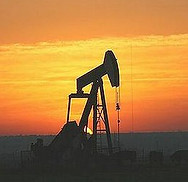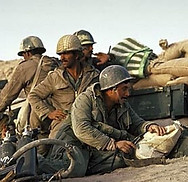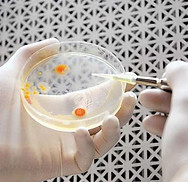A Biofriendly
World

The Past & Present of Bioplastic History
A Timeline of Discoveries and Contributors to the Bioplastic Industry

[HI1]
Mesoamerican Peoples
Indigenous peoples in Mesoamerica such as the Mayans, Olmecs, and Aztecs, have shown the first evidence of creating waterproof balls, containers, and clothes out of natural latex and rubber as a form as a bioplastic coating.
[HI31]
1.500 BCE
1862

[HI3]
Alexander Parkes
Founder of the first ever manmade plastic to be discovered, chemist and inventor, Alexander Parkes was not aware that his plastic was actually a bioplastic.
This material was made of cellulose nitrate and wascalles Parkesine which is made from various mixtures of nitrocellulose, alcohols, camphor, and oils, all renewable biomass sources.
[HI31]
1926
.jpeg)
[HI5]
Maurice Lemoign
Founder of the first bioplastic made from bacteria to be ever discovered, in 1926, French agronomist Maurice Lemoigne discovered: polyhydroxybutyrate (PHB), a polymer belonging to the polyester class. The petroleum crisis of the mid-1970s brought renewed interest in finding alternatives to petroleum-based products, the bacterium Bacillus megaterium being one.
[HI31]
[HI2]
1973

[HI18]
Oil and Energy Crisis
In 1973, the Oil and Energy Crisis occurred due to the embargo of Arab oil-producing countries to show support for Palestine. The rising oil prices and dependence to oil in the 1970s became one of the main motives for the development of bioplastics.
[HI31]
1975

[HI19]
Japanese Revolution
In 1975, a Japanese team of scientists. discovered the principle of biodegradable plastics, being Flavobacterium, a bacteria that brakes down nylon in pools containing waste water from a nylon factory.
[HI31]
1979

[HI21]
Wars In The Middle East
The Iranian Revolution and Iran Iraq War in 1979 lead to expensive oil prices. large debts, and deficits in Western democracies, that eventually caused the overproduction and oversupply of oils in the 1980s, veiling the urgency to find alternatives to oil-based plastics.
[HI31]
1983

[HI22]
Marlborough Biopolymers
Malbororough Biopolymers, the first bioplastic company was created by Imperial Chemical Industries (UK) and a local venture capital firm (Marlborough Teeside Management) in 1983. These bioplastics were created by Biopol, produced by bacteria, that could be processed into plastic products.
[HI31]
1992

[HI24]
Chris Somerville
Chris Somerville from Michigan State University confirmed that bioplastics (PHB) could be produced from a plant called Arabidopsis thaliana in 1992. Learn more about Arabidopsis thaliana [here!]
[HI31]
2001

[HI25]
Nick Tucker
The researcher from Lincoln University (UK) was the first to use elephant grass, as shown in the image above, as bioplastic in the production of articles, adding on another material that could be used as a renewable source in the industry.
[HI31]
2010

[HI27]
Rémy Lucas
Malbororough Biopolymers, the first bioplastic company was created by Imperial Chemical Industries (UK) and a local venture capital firm (Marlborough Teeside Management) in 1983. These bioplastics were created by Biopol, produced by bacteria, that could be processed into plastic products.
[HI31]
2018

[HI28]
Arctic Biomaterials
Malbororough Biopolymers, the first bioplastic company was created by Imperial Chemical Industries (UK) and a local venture capital firm (Marlborough Teeside Management) in 1983. These bioplastics were created by Biopol, produced by bacteria, that could be processed into plastic products.
[HI31]
2018

[HI30]
Revolution in Packaging
The first fruit to be packaged in bioplastic packaging occurred in 2018, beginning a revolution in packaging that will hopefully be used as an example to pave the way in the future for more bioplastic packaging.